© 2013 Benden Sound Technology
Made by Serif



Background
This synth had been newly-
Restoration
It was immediately clear that the power supply had been worked on previously and
that the standard of workmanship was questionable. In particular, certain capacitors
had not been replaced when they should have been, and this had led to excessive ripple
on the voltages supplied to the analogue circuitry. No amount of self-
A full recapping of the power supply restored reliable self-
New Development
My client then asked whether it would be possible to do anything about the fading
vacuum fluorescent displays (VFDs). This is a well-
I can't resist this sort of challenge. It took a lot of effort, but I was able to
design a total replacement for the original Xpander displays using modern parts and
the results are stunning. The clunky old "starburst" displays are replaced by clear
dot-
This display upgrade is available to purchase and is a fairly straightforward retrofit
-
Sound
Just running through the factory presets on the Xpander gives a hint of how deep its capabilities are. Yes, there are sounds there which one has heard on almost every synth, but there are also others which make you want to grab the manual just to work out how they were done. In particular, the complex modulation opportunities available (and only made possible by software calculation) enable rich sounds which would require extra offboard effects to equal on less advanced instruments.
While not without limitations -
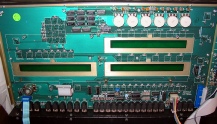
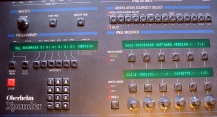
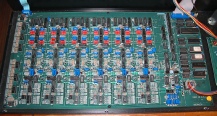
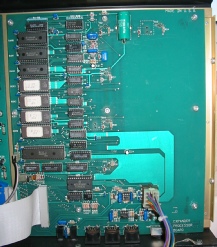
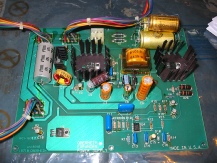
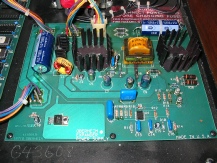
Xpander voice card. All six voices share one huge PCB.
Xpander CPU board. Main processor is a 68B09.
Xpander front panel PCB with display board removed. Rotary encoders are at the top right.
Brand new dot-
Xpander PSU BEFORE repair. A mixture of original and replaced capacitors.
Xpander PSU AFTER repair. All new low-
| Crumar Ensemble |
| G-SSL Compressors |
| Lexicon 224/224X Reverberators |
| Oberheim OB-X |
| Oberheim Xpander |
| OB-VFD Display Upgrade |